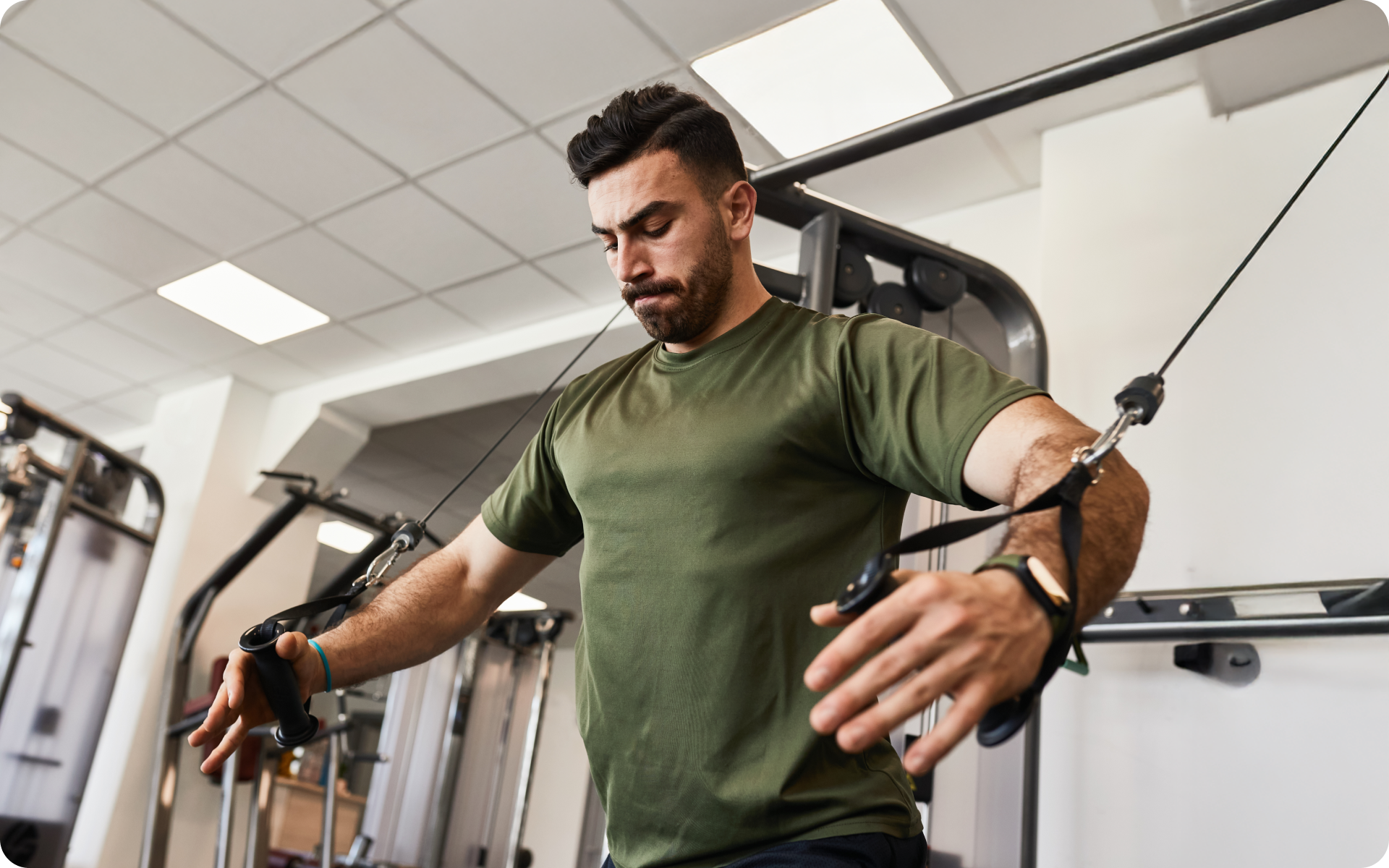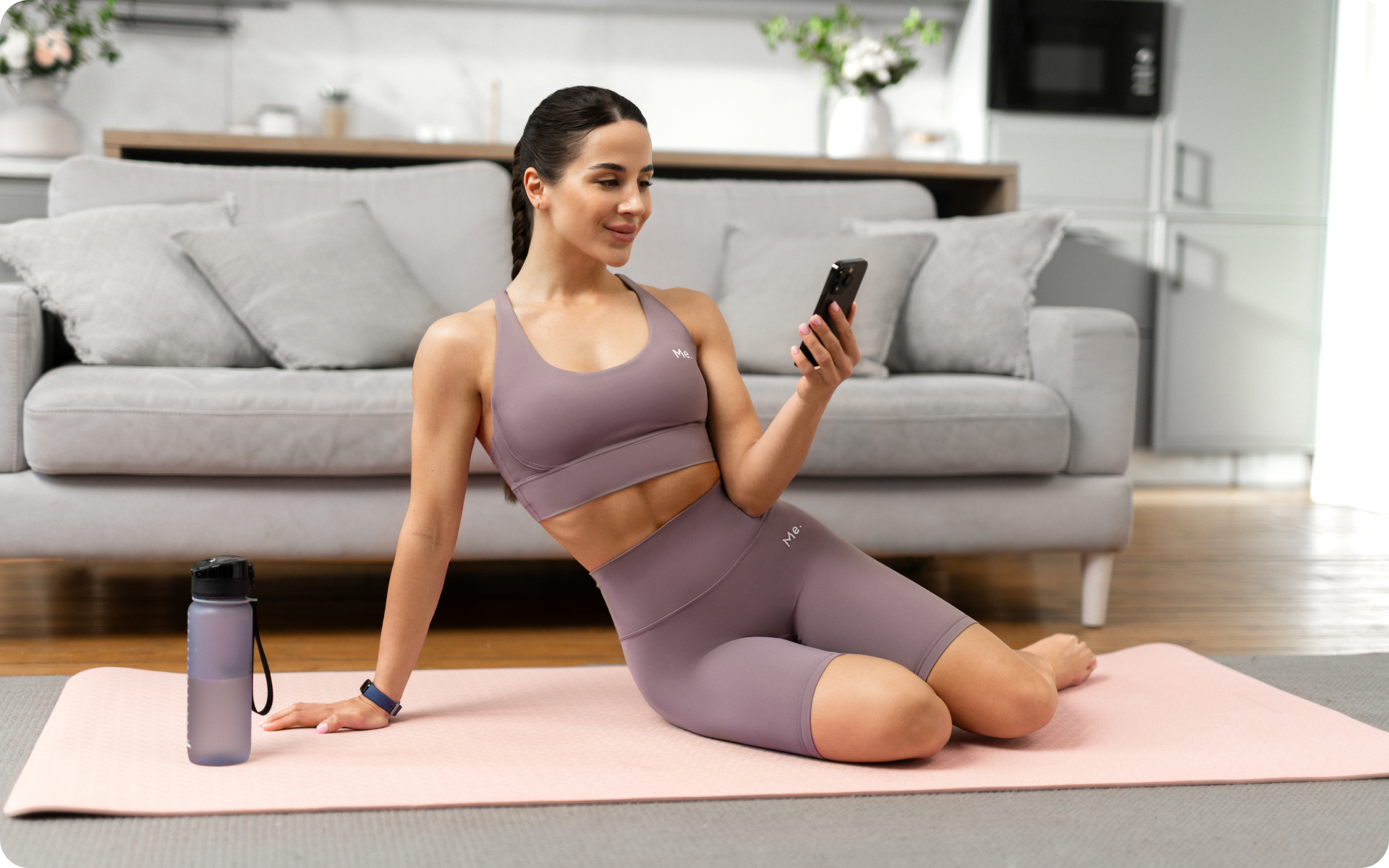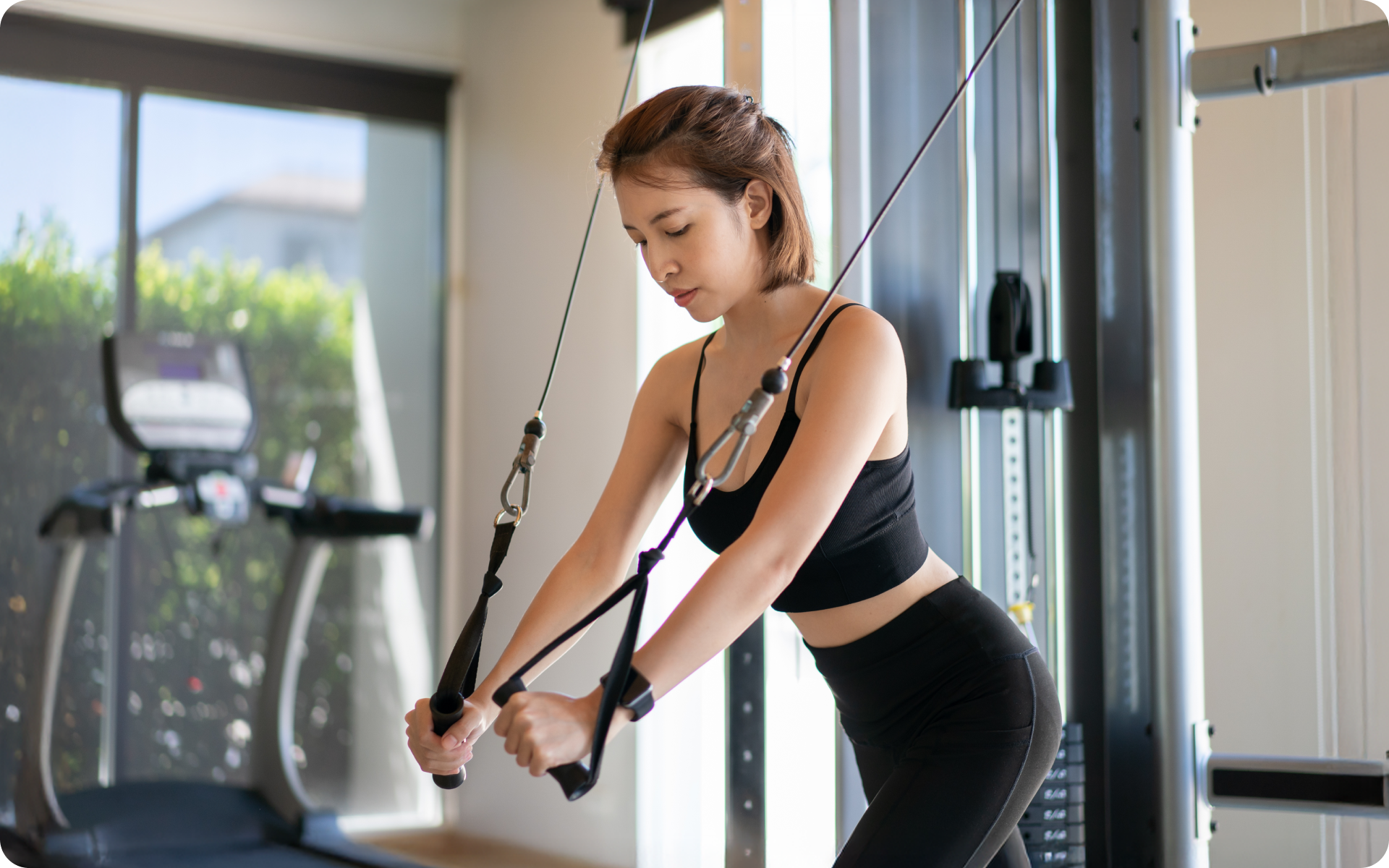Your legs are the foundation of your strength, supporting you in everyday activities and rigorous exercises alike. These muscles, from your glutes to your calves, play a critical role in mobility, stability, and even overall posture.
So you might think that building strength in the lower body requires heavy weights or a gym membership, but a bodyweight-only routine can be just as effective.
Truth is, with the right strategies and exercises, you can increase muscle endurance, strength, and even power without any equipment.
Here’s how to do an intense lower body workout at home, focusing on 7 key exercises that target the major muscle group in your legs.
This approach not only makes fitness accessible to everyone, regardless of their resources, but also proves that you can achieve substantial progress and maintain physical health with minimal equipment.
Can You Build Lower Body Muscle Without Weights?
Yes, you can build lower body muscle without weights. That’s because the principle of progressive overload (where you challenge your muscles to gradually adapt and grow) can be applied in various ways, not just by increasing the amount of weight you lift (5).
In fact, bodyweight exercises can be just as challenging as using weights because of the ability to combine bodyweight strength exercises with plyometric varieties, forcing your muscles to work harder and increasing muscular power
Here are some of the best ways to progressively overload while performing a bodyweight lower body workout, without equipment:
Tempo Training
Tempo training is all about slowing down and controlling the speed of your movement. This method is super effective because it increases the time your muscles are under tension, making them work harder with each rep.
For example, when doing a squat, instead of going down and up quickly, you’d take 3-4 seconds to lower yourself down, hold for a second at the bottom, and then take 3-4 seconds to come back up. This slow burn can help improve muscle endurance and strength without needing any weights.
1 1/4 Reps
This technique adds a little “extra” to your regular reps and can really boost the intensity of your workout.
Here’s how it goes: In the middle of a standard movement, like a lunge, you add an extra quarter movement on top of a full range of motion. This means you go down into the lunge, come up a quarter of the way, go back down, and then come all the way back up.
This small addition increases the time your muscles are working and adds more strain, helping to build strength and endurance more effectively.
Paused Work
Pausing is pretty much what it sounds like—stopping and holding your position at the most challenging part of the exercise.
For instance, in a squat, you’d stop and hold when your thighs are parallel to the ground. By pausing, you put more demand on your muscles to complete the movement. This not only helps with muscle growth but also improves your control and stability, as well as strength in the end range of motion during exercises.
If you struggle to even flirt with the idea of giving up your favorite foods or working out till your legs give way – BetterMe app is here to breathe a fresh perspective into the way you view the weight loss process! Check out the app and experience the fun side of fitness and dieting with BetterMe!
Explosive Movements
Explosive movements, also known as plyometrics, involve rapid, powerful movements that start with a muscle lengthening action and are immediately followed by a muscle shortening action.
Incorporating jumps or explosive sprints into your routine forces your muscles to exert maximum effort in short bursts. This high-intensity effort can significantly improve muscle power, strength, and endurance (2).
For instance, adding a jump at the end of a squat or doing jump lunges instead of regular lunges can make your workout more dynamic and challenging.
The quick switch from a contraction to a lengthening phase in these movements increases your heart rate and burns more calories, enhancing your overall fitness level and muscle tone.
Unilateral Training
Unilateral training means focusing on one side of your body at a time. By doing exercises that isolate one leg, like single-leg squats or lunges, you challenge your balance and coordination, which forces your muscles to work harder.
This not only helps to correct muscle imbalances by strengthening both sides of your body equally and individually, but also increases core engagement.
When you perform a unilateral exercise, your core has to work overtime to keep your body stable, which adds an extra layer of challenge to your workout. Plus, it’s great for improving your focus on muscle engagement and mind-muscle connection, enhancing the effectiveness of your workout (3).
Interested in strengthening your core at home? We’ve delved deeper into this in our core calisthenics blog.
Eccentric Focus
Eccentric training involves focusing on the lengthening phase of an exercise. When you slow down the part of the movement where your muscles are lengthening, you’re doing an eccentric contraction.
For example, if you take 4-5 seconds to lower your body back down from a squat or a lunge, you’re putting more stress on your muscles, compared to a regular movement. This stress causes micro-damage to muscle fibers, which, when repaired, leads to stronger and larger muscles.
Eccentric training also improves flexibility and lowers the risk of injuries. It’s an excellent way to push past fitness plateaus and see significant gains in muscle strength and endurance (7).
Read more: Calisthenics Warm Up 101: Bodyweight Exercises To Get Your Blood Flowing Before Your Workout
Can I Build Legs With Bodyweight Exercises?
Yes, you can definitely build your legs with bodyweight lower body workouts at home. The key to building muscle is progressive overload, and that can be achieved without weights (5).
Below are 7 body weight leg exercises for beginners to consider when you need a full bodyweight lower body workout:
Tempo 1 ¼ Squat (Glutes, Quads, Hamstrings)
A tempo squat is slightly different from a regular squat. Basically, you’re slowing down the movement and adding a little “extra” to each rep.
In this case, we have a 3-1-1-1 tempo, meaning you take 3 seconds to lower, pause for 1 second at the bottom, take 1 second to come up a quarter of the way, go back down for another second, and then finally stand all the way up.
This variation adds more time under tension and puts your muscles to work effectively, without weights.
Follow these steps to perform a tempo 1 ¼ squat:
- Stand with your feet shoulder-width apart, toes slightly turned out.
- With your hands clasped in front of you or placed on your hips, lower into a squat by pushing your hips back and bending at the knees.
- Lower yourself down to where your thighs are parallel to the ground.
- Pause for one second, then come up a quarter of the way.
- Slowly lower back down to parallel and then stand all the way up.
- Repeat for 10-12 reps.
Single-Leg Glute Bridge (Glutes, Hamstrings)
As part of unilateral training, the single-leg glute bridge is a great exercise that targets your glutes and hamstrings while also engaging your core.
Follow these steps to perform a single-leg glute bridge:
- Lie on your back with your knees bent and feet flat on the ground.
- Extend one leg out straight in front of you, keeping it elevated off the ground.
- Push through your heel and raise your hips up off the ground, squeezing your glutes as you do so.
- Hold for 1-2 seconds at the top, then slowly lower yourself back down.
- Complete 10-12 reps on each leg.
Slow the movement to increase intensity and make sure to keep your core engaged throughout the exercise.
Nordic Hamstring Curl (Hamstrings, Glutes, Calves)
Inspired by the Nordic hamstring exercise, which requires a partner to hold your ankles down, this variation can be done without any equipment.
You’ll need to hook your feet under a stable surface, say your dresser, to anchor them down. You’ll use a pillow under your knees to soften the friction as you lower yourself down.
Follow these steps to perform a Nordic hamstring curl:
- Kneel on a soft surface with your feet anchored under a sturdy piece of furniture.
- Bend your hips only slightly, not at the spine; you should feel tension in your hamstrings.
- Slowly lower yourself down towards the ground, using your hamstrings to control the movement.
- Once you can’t go any further, push back up to the starting position.
- Perform as many reps as possible (AMRAP) and aim to increase the number of reps each week.
Pistol Squats (Glutes, Quads, Hamstrings)
A challenging exercise for advanced athletes, the pistol squat requires a lot of balance and strength in your legs. Your quads (the front of your thighs) and hamstrings (the back of your thighs) will be activated to a great extent, as you try to keep yourself in control throughout the movement.
Follow these steps to perform a pistol squat:
- Stand upright with your feet shoulder-width apart.
- Extend one leg out in front of you.
- Lower down into a squat position, keeping your extended leg straight in front of you.
- Push through your heel to come back up to standing.
- Repeat for 8-10 reps on each side.
Whether you’re a workout beast or just a beginner making your first foray into the world of fitness and dieting – BetterMe has a lot to offer to both newbies and experts! Install the app and experience the versatility first-hand!
Jump Squats (Glutes, Quads, Calves)
Explosive exercises add a different dimension to bodyweight leg workouts. They not only target your muscles but also increase your heart rate and burn more calories. Jump squats are a classic plyometric exercise that will help you build power and strength in your lower body.
Follow these steps to perform jump squats:
- Start with your feet shoulder-width apart.
- Lower into a squat position.
- Explosively jump straight up into the air, pushing through your feet.
- Land softly back down into the squat position and repeat for 12-15 reps.
Walking Lunges (Glutes, Quads, Hamstrings)
An excellent exercise for targeting all three major muscle groups in your legs, walking lunges also engage your core and challenge your balance. While your quads and hamstrings do most of the work, your glutes also play a significant role in stabilizing your body throughout the movement.
Follow these steps to perform walking lunges:
- Begin standing upright with your feet hip-width apart.
- Take a big step forward with one leg, lowering yourself down until both knees are bent at 90 degrees.
- Push through your forward leg’s heel to come back up to standing.
- Repeat on the other leg and continue walking forward for 10-12 steps.
Body Weight Clamshell (Glutes, Hips)
Targeting your gluteus medius, which is a crucial muscle for stabilizing your hips and preventing injuries, the bodyweight clamshell exercise can be done without any equipment. It’s an excellent way to activate and strengthen your glutes while also challenging your stability.
Increase the time under tension by performing the exercise slowly and with control.
Follow these steps to perform a bodyweight clamshell:
- Lie on your side, with your knees bent at 90 degrees and feet stacked on top of each other.
- Slowly lift your top knee away from the bottom one, keeping both feet together.
- Hold for a second at the top, then slowly lower yourself back down.
- Repeat for 12-15 reps on each side.
Read more: 30-Minute Bodyweight Beach Workout for Beginners
FAQs
Is 4 Lower Body Exercises Enough?
4 lower body exercises can be enough for beginners or those just starting to incorporate bodyweight training into their routine. However, as you become more advanced and your muscles adapt, it is recommended to increase the number of exercises and variations to continue challenging your muscles and preventing plateaus (5).
Can I Do Only Lower Body Workouts?
Experts recommend doing both upper body and lower body exercises to achieve a balanced and functional physique. Neglecting one area can lead to muscle imbalances, which may increase the risk of injury (1).
Can I Do Leg Day Without Weights?
Yes, it is possible to have an effective leg day workout without using weights. Bodyweight exercises and plyometrics can provide enough resistance to challenge your muscles and promote progress (6). Incorporating different variations and increasing the intensity can also help make bodyweight leg workouts more challenging.
In our Calisthenics Leg Workout , we have provided a variety of exercises that target different muscle groups in the legs and can be done without any equipment.
How Many Squats Per Day?
You shouldn’t perform squats daily without rest; however when programmed correctly, you can do squats 2-3 times a week and still see results.
2-4 SETS OF 8-12 REPS is effective for overall leg strength and muscle growth. However, the number of squats per day may vary, depending on an individual’s fitness level and goals.
Can You Bulk With Just Bodyweight?
It might be challenging to bulk solely with bodyweight exercises, as they do not provide enough resistance for massive muscle growth. However, incorporating progressive overload and increasing the intensity of your bodyweight workouts can help build muscle mass. Proper nutrition is also essential for bulking, so make sure you are consuming enough calories and protein to support muscle growth (4).
The Bottom Line
A bodyweight lower body workout can be just as effective as using weights to target your leg muscles. By incorporating different exercises and variations, you can challenge your muscles and promote progress without any equipment. Remember to focus on proper form, increase the intensity gradually, and listen to your body for optimal results.
DISCLAIMER:
This article is intended for general informational purposes only and does not serve to address individual circumstances. It is not a substitute for professional advice or help and should not be relied on for making any kind of decision-making. Any action taken as a direct or indirect result of the information in this article is entirely at your own risk and is your sole responsibility.
BetterMe, its content staff, and its medical advisors accept no responsibility for inaccuracies, errors, misstatements, inconsistencies, or omissions and specifically disclaim any liability, loss or risk, personal, professional or otherwise, which may be incurred as a consequence, directly or indirectly, of the use and/or application of any content.
You should always seek the advice of your physician or other qualified health provider with any questions you may have regarding a medical condition or your specific situation. Never disregard professional medical advice or delay seeking it because of BetterMe content. If you suspect or think you may have a medical emergency, call your doctor.
SOURCES:
- Balancing Act: Muscle Imbalance Effects on Musculoskeletal Injuries (2020,nih.gov)
- Effectiveness of plyometric training vs. complex training on the explosive power of lower limbs: A Systematic review (2022,nih.gov)
- Effect of unilateral training and bilateral training on physical performance: A meta-analysis (2023,nih.gov)
- Nutritional Strategies to Promote Muscle Mass and Function Across the Health Span (2022,nih.gov)
- Progressive overload without progressing load? The effects of load or repetition progression on muscular adaptations (2020,nih.gov)
- The advantages of body-weight exercise (2020,harvard.edu)
- The Health and Functional Benefits of Eccentric versus Concentric Exercise Training: A Systematic Review and Meta-Analysis (2023,nih.gov)










